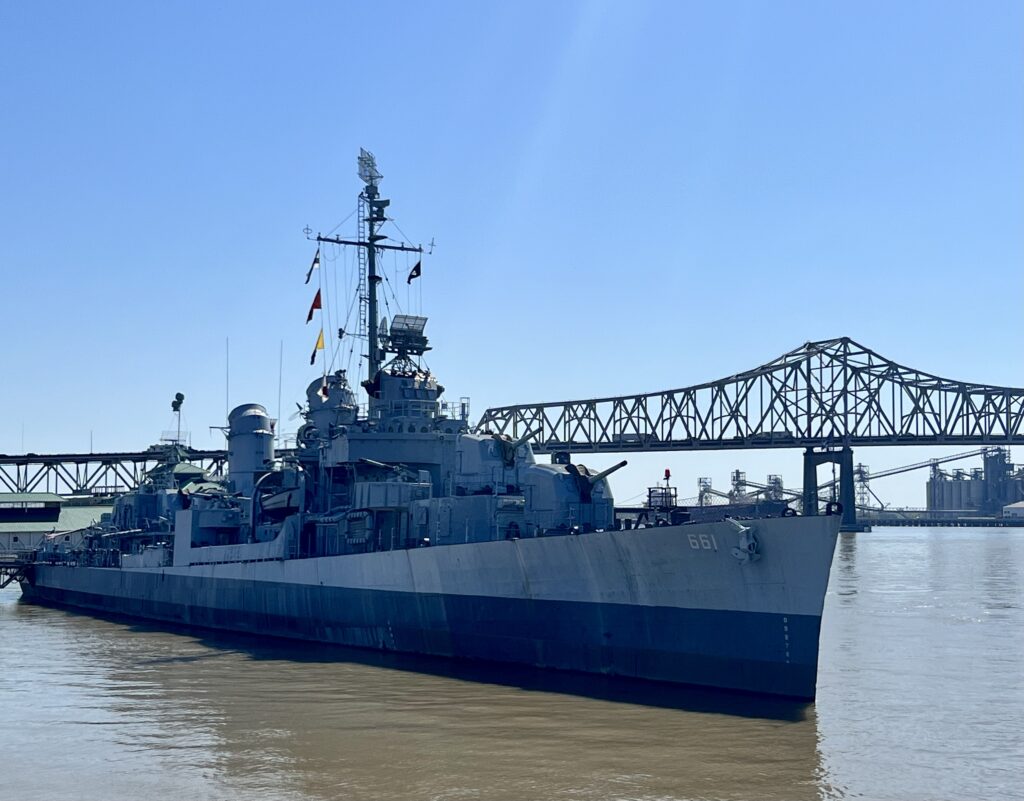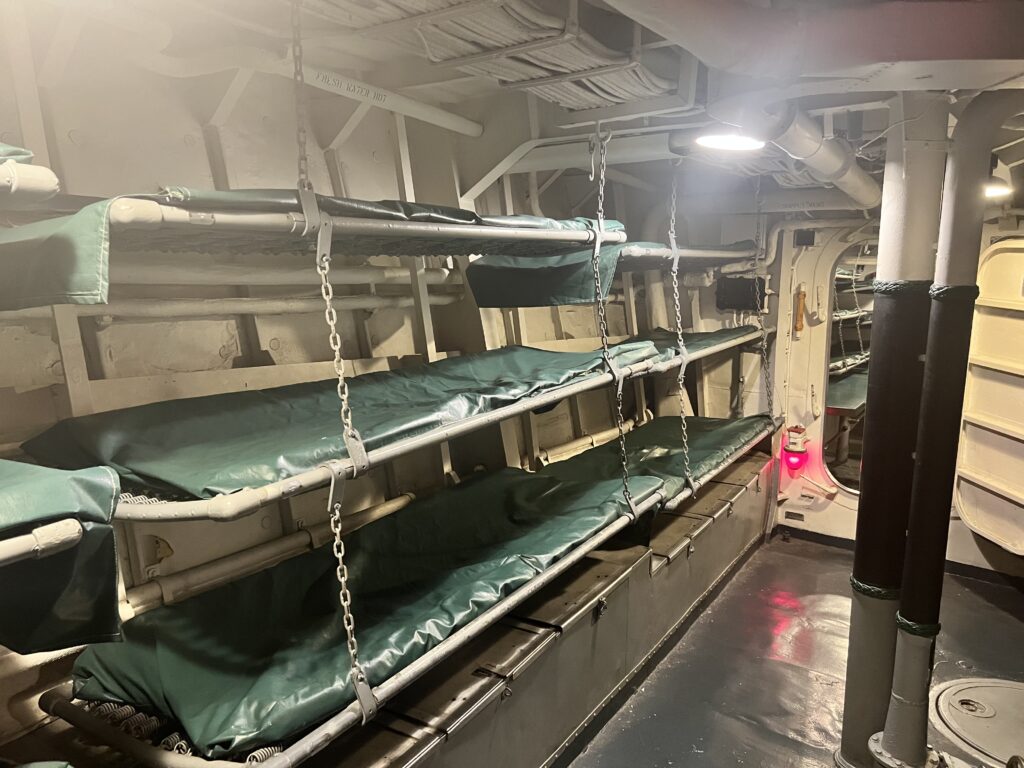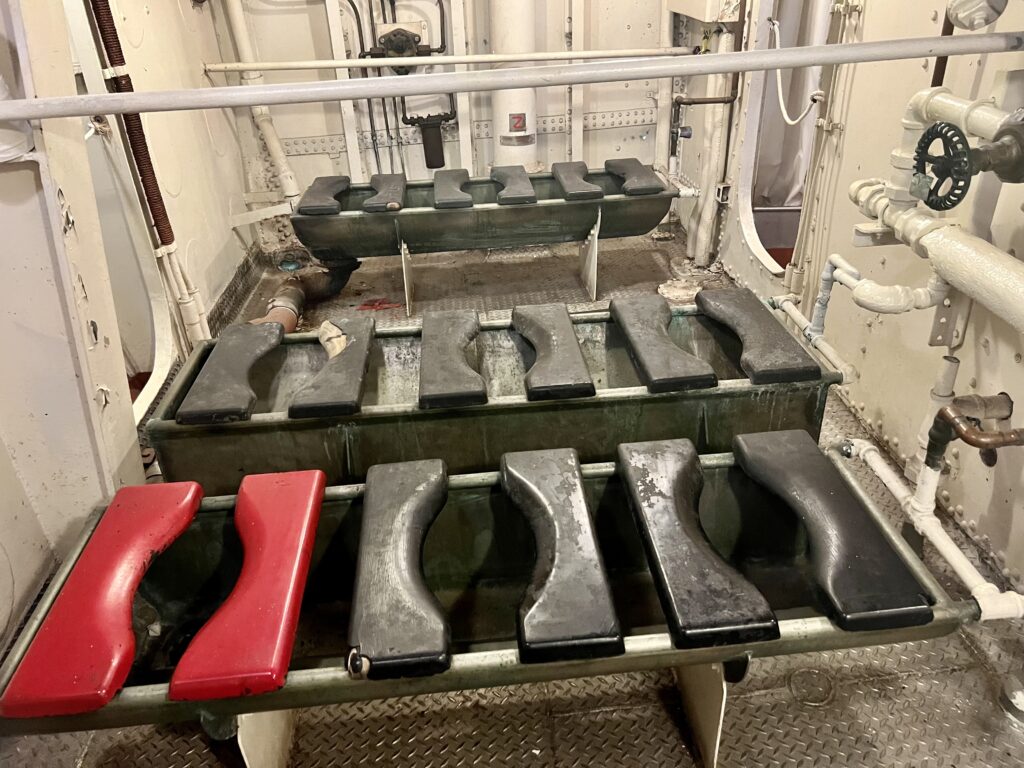Took a tour of the WWII destroyer USS Kidd today, and left extremely impressed. The ship is moored in the Mississippi River alongside the Riverfront Plaza in downtown Baton Rouge, not far from the state capital building. The USS Kidd is 1 of only 4 remaining Fletcher Class destroyers, and the only one in it’s original WWII configuration. Meaning, if you want to see what an authentic WWII destroyer looks like, this is the only game in town.

I don’t have any official statistics, but I’ll venture to say that a good number of people have toured a WWII ship at some point. Coming from San Diego, the USS Midway was a very popular downtown attraction, and there are numerous other floating museums around the country. Only problem is, most of those are either Battleships or Carriers, which given their immense size and importance, inevitably get the bulk of the attention, but represent only a small fraction of the United States’ WWII naval arsenal. Touring a ship such as USS Kidd provides you with a different perspective and a more intimate experience to learn about WWII.
Wondering through the bowels of the ship, the first thing you notice is how crowded it must have been. It’s hard to imagine a crew of 300 plus men all living in such cramped quarters. Moving between compartments you are constantly ducking or squeezing to get through, luckily for them In N Out Burger hadn’t been invented yet.

As you move through the ship everything is clearly labeled, and there are plenty of displays sharing the ship’s history. Some of these do in fact address the cramped conditions, and provide some very interesting context. Here is my favorite excerpt from a display next to the “head”, which could generously be called cozy in terms of spacing (picture below), “To truly understand the crew, you must take yourself out of your present day world and place yourself in theirs. Coming out of the Great Depression, most enlistees and draftees were malnourished. Three square meals a day was uncommon. Most did not know what air conditioning was, much less having experienced it, and so they did not miss it. Large families were the norm. Many had never had a bed to themselves as kids and came from homes where multiple siblings shared a room. For those from rural areas, outhouses were still more common than indoor plumbing. Regular paychecks were rare, so many kept a little spending cash and sent the rest home to help the family. This is the world they lived in.” Certainly gives you some perspective and an appreciation for how the sailors on board lived.

I have plenty more I could say about the USS Kidd, but I will exercise some brevity and end it here. For anyone interested in learning more about the ship, or visiting the museum, check out the link below.
usskidd.com
